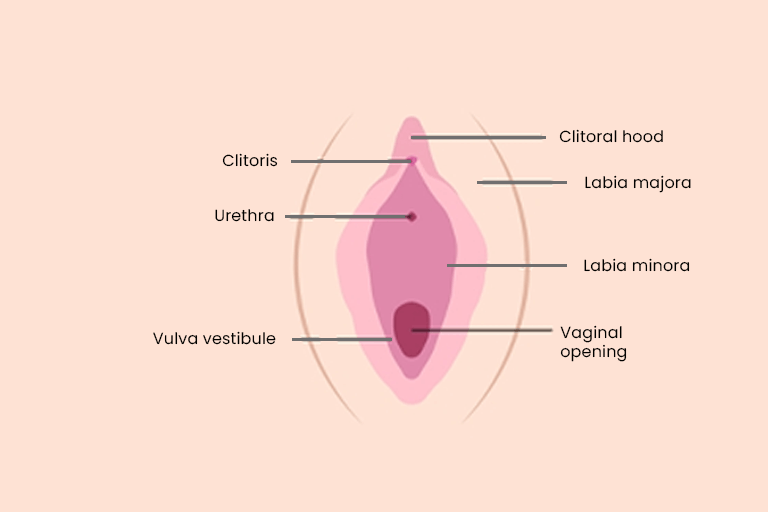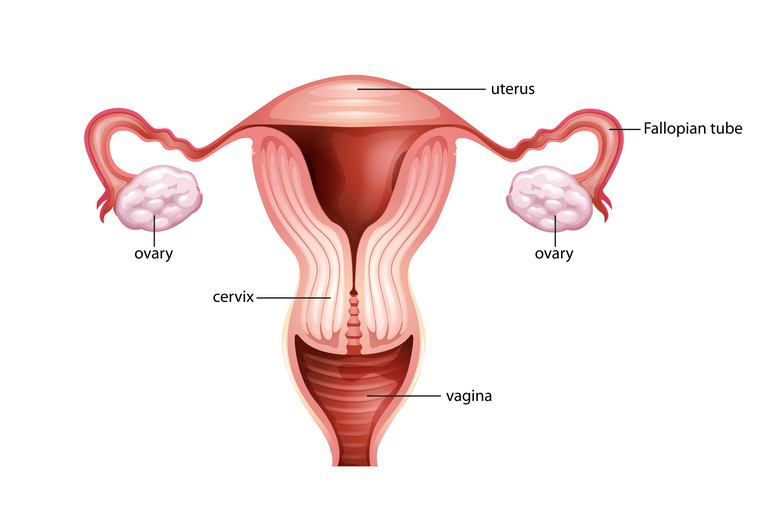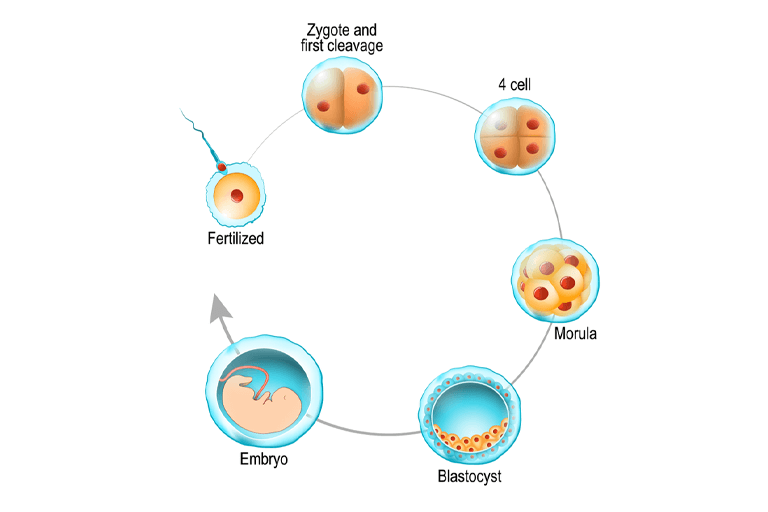The human female reproductive system is made up of external and internal sex organs. They produce hormones and are responsible for sexual activity, menstruation, and reproduction of new offspring. The female reproductive system is immature at birth and develops to maturity at puberty.
Anatomy of the female reproductive system
External genitalia (vulva)

Labia majora (large lips)
- Vertical, thick and large outer folds of skin are called labia majora.
- It protects and encloses the other external reproductive organs.
- During puberty, hair growth occurs on the skin of labia majora which also contains sweat and oil-secreting glands.
Labia minora (small lips):
- It is thin and small inner folds that lie just inside labia majora and surround the opening of vagina and urethra.
- Labia minora protects the vestibule from dryness, infection, and irritation.
- Its skin is very delicate and can become easily irritated and swollen.
Clitoris
- Clitoris is a female sex organ located at the top of the vulva.
- In humans, it is the vulva’s most sensitive area and the primary anatomical source of female sexual pleasure.
- It’s size and shape is roughly a pea shape and have at least 8000 nerve endings.
Vaginal opening
- Vaginal opening allows menstrual blood to flow out of the body and baby to come out of the body during delivery.
- Penis can go inside the vagina through a vaginal opening.
Hymen
- Hymen is a thin piece of connective tissue that surrounds or partially covers the vaginal opening.
Urethral opening
- The opening in the urethra for urine to pass through.
Internal genitalia
This includes the vagina, cervix, uterus, fallopian tubes, ovaries, and vestibular glands.

Vagina
- The vagina is a fibromuscular canal that joins the outside of the body to the cervix of the uterus.
- The vagina can widen to accommodate a penis during sexual intercourse and a baby during delivery and then shrink back.
- It’s lined with a mucous membrane that keeps it moist.
- The average length of the vaginal canal is around 2.5 inches.
Cervix
- -The cervix is the neck of the uterus, the lower narrow portion where it joins with the upper part of vagina.
- -The cervix opens (dilates) to allow a baby to come out during vaginal child birth.
Uterus
- The uterus is a hollow, muscular organ in a woman’s pelvis that is also known as the womb.
- It is an inverted pear shaped organ about 8 cm long, 5 cm wide, and 4 cm thick.
- The uterus is located between the bladder and rectum.
- The uterus provides nutritional support, mechanical protection and helps in baby’s waste removal for the developing embryo.
Main function of the uterus
- Implantation: The fertilized egg (zygote) implants itself in the uterus endometrium, where it is nourished by uterine blood vessels.
- Growth: As the embryo grows, the uterus expands to accommodate it.
- Delivery: During labour, the uterus contracts as the cervix dilates which results in baby’s delivery.
Fallopian tubes
- There are two fallopian tubes which are narrow tubes that are attached to the upper part of the uterus and serve as pathways for the ovum to travel from ovaries to uterus.
- Fertilization of an ovum by sperm normally occurs in the ampulla of the fallopian tube.
- The fertilized egg (zygote) then moves to the uterus where it implants into the endometrium (uterine layer).
Ovaries
- The ovaries are small, oval-shaped glands (the normal size of a healthy ovary is 3cm long, 2.5cm wide, and 1.5cm thick) that are located on either side of the uterus.
- Ovaries produce eggs (ovum) and hormones that control menstrual cycle and pregnancy.
- Ovaries continue to release an egg each menstrual cycle alternatively until they reach menopause.
- Sometimes ovaries can release more than one egg, and this can result in multiple pregnancy.
- After menopause ovaries stop releasing eggs.
- During ovulation one of the ovaries releases an egg (ovum), if a sperm fertilizes the ovum, the female becomes pregnant.
Function of female reproductive system

- The main function is to produce offspring and to allow a person to have sexual intercourse.
How many eggs does a woman have?
- During foetal development, females have about 60 lakh eggs.
- At birth, there are approximately 10 lakhs eggs left.
- By the time a female reaches puberty, only about 3 lakh eggs remain.
- The number of eggs remaining and female fertility continuously declines with advancing age.
Take control of your fertility health—learn about female infertility causes, treatments, and symptoms today to ensure a healthier future.

